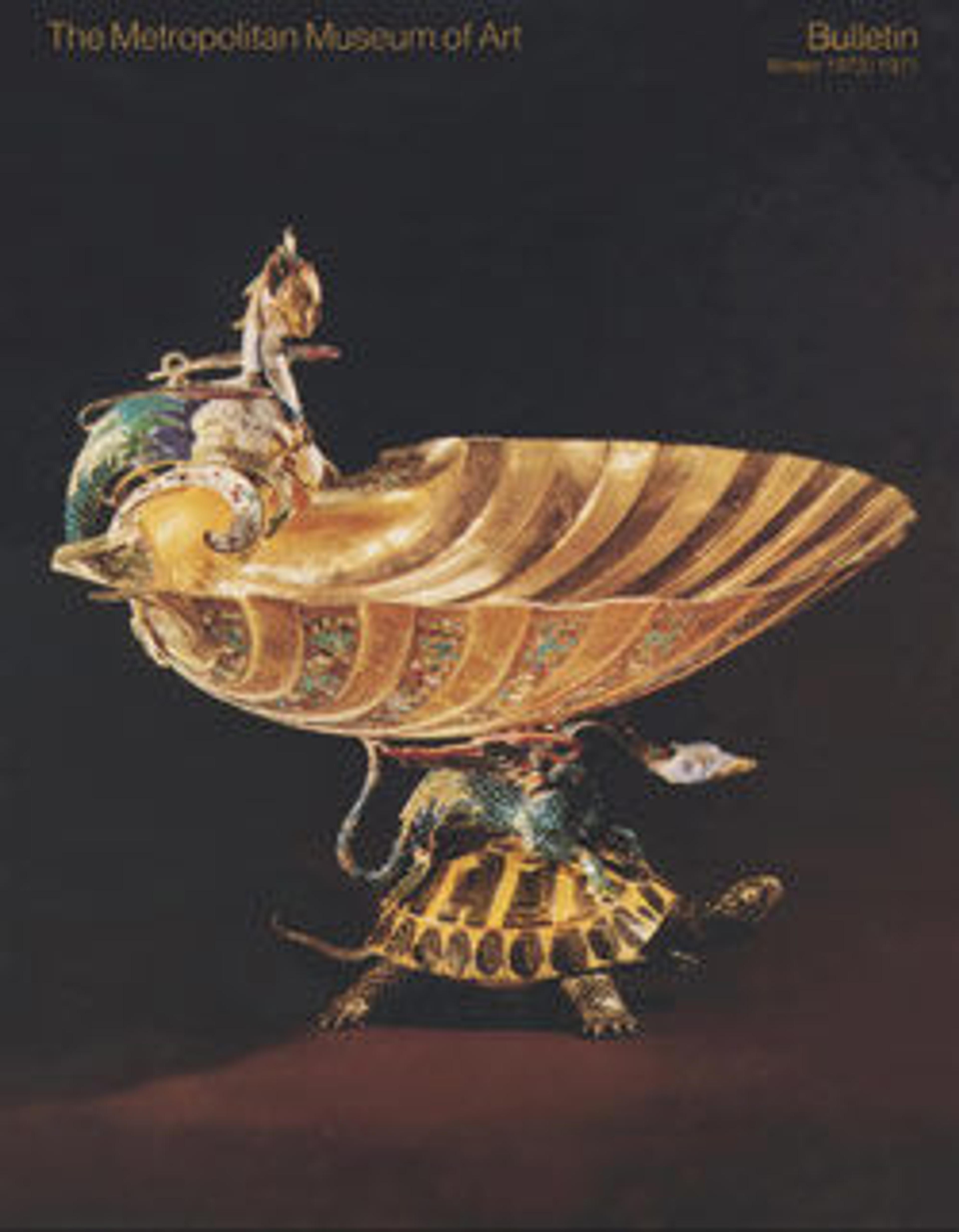Nine-light candelabrum
This immense centerpiece rests on a triangular base with sloping sides and figures of children at each corner, rising to a triangular platform to which is bolted the candelabrum proper. Three substantial scrolling feet support a second platform from which rises a shaft supporting three branches, each with three candle arms—creating nine lights overall. Rising through the middle of the candle arms are a group of large scrolls on which stands the crest of the Herbert family—a wyvern with outspread wings. The candelabrum was made for Robert Herbert, twelfth earl of Pembroke and Montgomery; his initials, PM, are ensigned by an earl's coronet on the sides of the base. The wyvern is not uncommon in British heraldry. It is a mythical monster with two eagle's legs ending in large talons, a dragon's head, batlike wings, and a long tapering tail ending in a narrow point.
The candelabrum is an example of a second phase of the Rococo—that style of the eighteenth century which reached its greatest development in the use of asymmetry almost a century before this piece was made. Here the difference is in the symmetrical combination of asymmetrical, smaller units, such as scrolls and large leaf forms, as well as the two little cupids who seem to be pursuing on a spiral path one little Psyche, who ascends the central shaft holding a rose. Added to the grand scale and presence of many diverse elements are the brilliantly burnished gilt surfaces alternating with other areas that are matte or broken up with ornament such as trellis panels.
The candelabrum is an example of a second phase of the Rococo—that style of the eighteenth century which reached its greatest development in the use of asymmetry almost a century before this piece was made. Here the difference is in the symmetrical combination of asymmetrical, smaller units, such as scrolls and large leaf forms, as well as the two little cupids who seem to be pursuing on a spiral path one little Psyche, who ascends the central shaft holding a rose. Added to the grand scale and presence of many diverse elements are the brilliantly burnished gilt surfaces alternating with other areas that are matte or broken up with ornament such as trellis panels.
Artwork Details
- Title: Nine-light candelabrum
- Maker: Paul Storr (British, 1771–1844)
- Date: 1835–36
- Culture: British, London
- Medium: Silver, gilt
- Dimensions: Overall (confirmed): 40 1/2 × 27 1/2 × 27 1/2 in. (102.9 × 69.9 × 69.9 cm)
- Classification: Metalwork-Silver
- Credit Line: Bequest of Rupert L. Joseph, 1959
- Object Number: 60.55.10a–s
- Curatorial Department: European Sculpture and Decorative Arts
More Artwork
Research Resources
The Met provides unparalleled resources for research and welcomes an international community of students and scholars. The Met's Open Access API is where creators and researchers can connect to the The Met collection. Open Access data and public domain images are available for unrestricted commercial and noncommercial use without permission or fee.
To request images under copyright and other restrictions, please use this Image Request form.
Feedback
We continue to research and examine historical and cultural context for objects in The Met collection. If you have comments or questions about this object record, please contact us using the form below. The Museum looks forward to receiving your comments.
